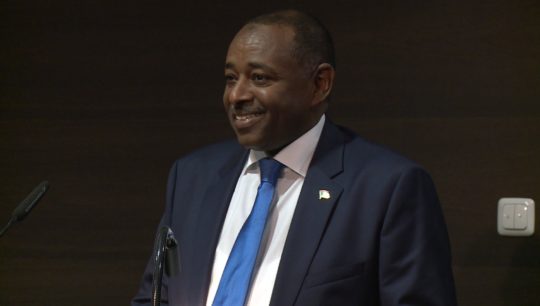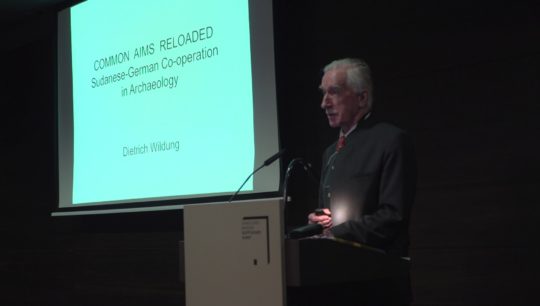09.07.2017
Report: Sudan Day 2017
Report: Sudan Day on July 29th, 2017
On Saturday, July 29th, 2017, our yearly thematic day on the archaeology of the Sudan and the Naga Project in particular took place. The opening speech by the Sudanese ambassador to Germany, S.E. Baderldin Abdalla ( who came down from Berlin just for this event) once more underlined the excellent spirit of co-operation between the Republic of Sudan and the archaeological excavations there.
 © Naga-Projekt
© Naga-ProjektIn his lecture “Common Aims Reloaded”, Dietrich Wildung presented German excavation projects in the Sudan and once more stressed that each and every project is an important contribution to the consolidation of the Sudanese population’s cultural identity.
 © Naga-Projekt
© Naga-ProjektAfter this, the lectures concentrated on “archaeology first-hand”: the team from the Egyptian Museum reported on the current state of the excavations at Naga and the scientific exploration of the former royal city. Christian Perzlmeier presented early considerations on the reconstruction of Temple 1200, a sacred building with unique architectural features which, according to the reliefs, was dedicated to the lion god Apedemak. Dietrich Wildung presented advances in the study of Meroitic sculpture, a corpus that has been greatly expanded in recent years through the Naga excavations. There followed two reports on current research by Julia Budka and Martina Ullmann from the Institute of Egyptology of the LMU Munich. In her lecture, Dr. Budka presented fascinating results from her Spring 2017 campaign on the Nile island of Sai, including the discovery of the tomb of the Master Goldsmith Khnummose; Dr. Ullmann was able to present an impressive example of how years of research in archives can lead to new observations about sanctuaries long considered lost – in this case, the temple of Ramses II in Gerf Hussein. In “Old Pots and High-Tech”, Karla Kröper talked about the use of modern technology in the documentation of a corpus of pottery and compared the ancient production techniques with that of the pottery made by the Sudanese population of Naga today. Christian Perzlmeier and Arnulf Schlüter presented the Naga homepage and the newly-programmed Naga Project database in a live presentation. At the end, Arnulf Schlüter offered a sneak peek into future excavation campaigns and the project’s long-term goals.
The number of participants, the lively discussions during the breaks and the overall positive reactions of the guests have shown once more that an intensive review of current excavations and research, when well-presented, is a crowd-pleaser. There is no doubt that Sudan Day will come again in 2018!

